When narrowing down the most expensive fish, there are several criteria to consider. While sharks and tuna often sell for large sums of money, both those fish are typically sold for food, rather than for aquariums, and the prices fluctuate a lot more. So for the purposes of this article, we will focus on those fish that are sold as pets.
Another consideration is the usual price for the animal, rather than the most ever paid for one. For instance, though there was one Polka Dot Stingray that sold for $100,000, that was only due to its unusual U-shaped head; ordinarily, Polka Dot Stingrays only sell for around $1,500, so it won’t make the top 10. Likewise, the Peppermint Angelfish won’t make the list even though an aquarium was offered $30,000 for their specimen because the aquarium refused the sale. Now let’s see which pet fish’s regular price does make the cut!
#10 Platinum Alligator Gar
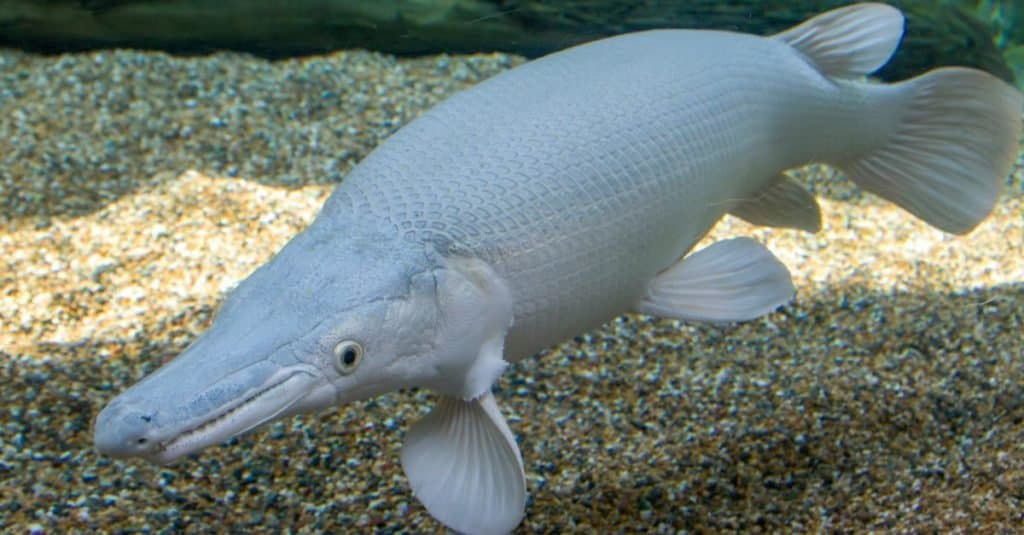
©Danny Ye/Shutterstock.com
One of the only freshwater entries on this list is the Platinum Alligator Gar. Overfishing has decreased their habitat, so these are mostly found in the southern United States and parts of Mexico. These pale gray Alligator Gar reach lengths of up to 10 feet in the wild and cost around $1,600, though some have sold for about three times that price.
#9 Wrought Iron Butterflyfish
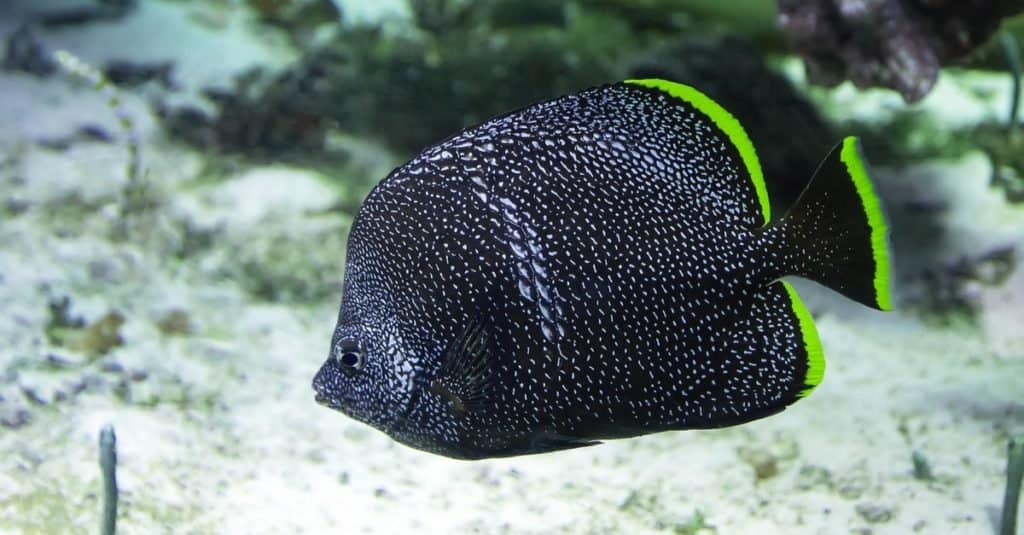
©William Cushman/Shutterstock.com
Coming in at ninth place is the Wrought Iron Butterflyfish. Native to Japan, this animal is named for its unusual metallic appearance, which looks like crosshatched iron fencing. The Wrought Iron variety is less colorful than other species of Butterflyfish, with its only bright color being a thin bit of yellow on its tail and back half. These pets fetch a price of $3,800.
#8 Flathead Perch
The Flathead Perch is found in the reefs of Australia and costs about $5,000 to own. These perch are also known as Rainfordia opercularis. Their coloring is very striking when they are young, mellowing to blue and yellow stripes that run from their mouths to their tails as they mature. They reach lengths of around six inches.
#7 Neptune Grouper

©John E. Randall / CC BY-SA 3.0, via Wikimedia Commons – License
Neptune Grouper Cephalopholis igarashiensis is known by several other names, including the garish hind, goldbar grouper, and the Japanese cod. One reason for this grouper’s $6,000 price tag, besides its rarity, is its unique coloring or pinkish-orange and yellow with white stripes and black spots. Another reason is that they are hard to capture alive, as they are very susceptible to death from rapid decompression. These groupers can reach up to 17 inches long and live as long as 30 years!
#6 Clarion Angelfish

©Allison C Bailey/Shutterstock.com
First on our list is the Clarion Angelfish. This beautiful saltwater specimen primarily found off the coast of Mexico is bright orange with electric blue stripes. They reach a maximum length of about eight inches. Clarion Angelfish has a conservation status of Vulnerable. With a price tag of around $7,000, this gorgeous specimen is quite expensive in the exotic fish world!
#5 Golden Alligator Gar
Like its platinum cousin, the Golden Alligator Gar costs around $7,000. They usually grow to about six feet in the wild and are a bright golden yellow-orange. Only about one in every 10,000 Alligator Gar has this rare gold coloration. While they have very sharp teeth, they do not pose a danger to humans, unless a person consumes their eggs, which are toxic.
#4 Golden Basslet
Coming in at number four on the list is another animal with gold coloring, the Golden Basslet. They are found near Cuba. Unlike other basslets, goldens are not primarily purple, but obviously golden orange, with some purple and black markings as well. This is the second smallest entry on our list, as they grow to just under three inches. Owning one will cost you $8,000, which is nearly $3,000 per inch!
#3 Bladefin Basslet
Beginning our top three is the Bladefin Basslet, found in the Atlantic Ocean. This is the smallest animal on our list. Bladefins only reach about one and a half inches in length. These orange and white striped basslets cost a whopping $10,000 each, and they are the only species in the Jeboehlkia genus.
#2 Masked Angelfish
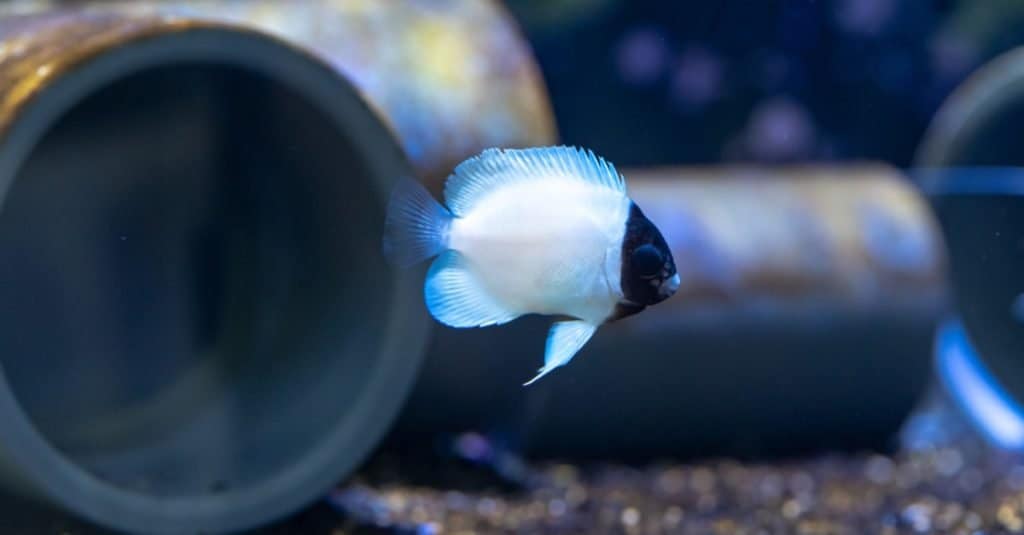
©chonlasub woravichan/Shutterstock.com
In second place is another variety of the fish that began our list, this time the Masked Angelfish. The name comes from the colored markings around their eye, which may be yellow, black, or purple, depending on the type. They are found in the depths of Kauai in Hawaii. Because they live so deep in the ocean, it used to be much harder to obtain them, but now they are being bred in captivity and it is possible to buy one of these specimens for as little as $8,000 or as much as $20,000. It would take 20 of the most expensive of these to equal the cost of one of the highest animals on our list!
#1 Platinum Arowana
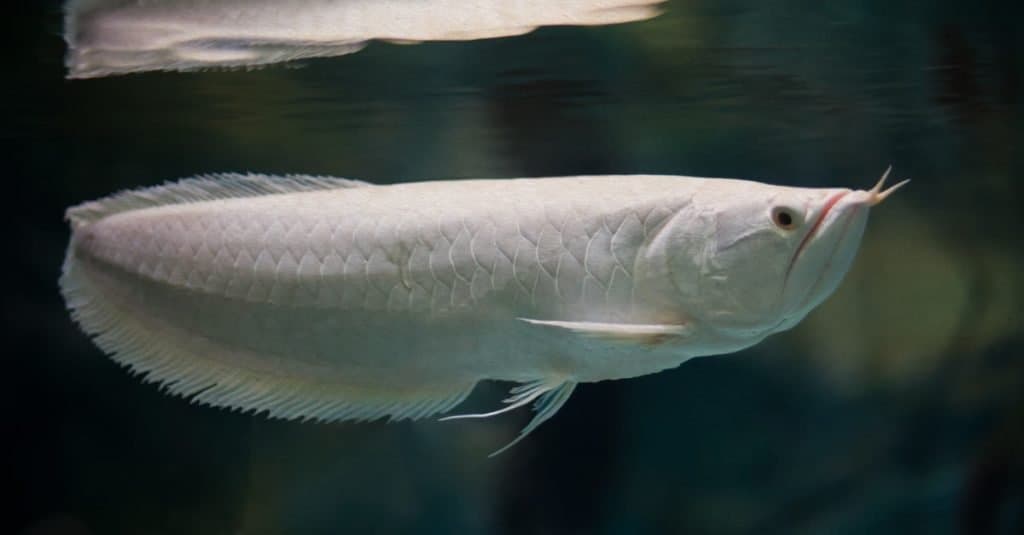
©Besjunior/Shutterstock.com
The Platinum, also popularly known as the Asian Arowana or Scleropages formosus, sometimes incorrectly referred to as a Dragon Fish, sells for up to $400,000, making it far and away the most expensive fish that can be bought for an aquarium. Here are some facts about the Platinum you might find interesting:
- The Asian Arowana is listed in the CITES (Convention on International Trade in Endangered Species) Appendix I, and international trading of this fish is against the law.
- In the 70s, the Asian Arowana was widely eaten and because of overfishing and loss of natural habitat this species became an endangered one
- The Asian Arowana can live up to 60 years in captivity and even more in the wild.
These endangered animals are actually banned in the United States. The platinum coloring is the rarest variety. They can reach lengths of up to three feet.
Fish Smuggling
Owning these extravagant fish may seem like a great addition to any in-home aquarium. However, the price paid for these fish is well over what they cost monetarily. Many of these fish species are rare, threatened, or even endangered and are illegally caught and smuggled across countries to get them to buyers. Fish smuggling further depletes natural populations, leaving ecosystems barren and unbalanced. Unbalanced environments lead to further destruction and loss of habitat, diminishing other fish populations in the area and ruining the food chains. Endangered species are becoming more prevalent, which drives the price up for these fish and makes them more enticing to exotic collectors. The cycle is vicious and unending unless it is stopped at the source: buyers.
Summary Of The Top 10 Most Expensive Fish
| Rank | Fish | Price (USD) |
|---|---|---|
| 1 | Platinum Arowana | $400,000 |
| 2 | Masked Angelfish | $20,000 |
| 3 | Bladefin Basslet | $10,000 |
| 4 | Golden Basslet | $8,000 |
| 5 | Golden Alligator Gar | $7,000 |
| 6 | Clarion Angelfish | $7,000 |
| 7 | Neptune Grouper | $6,000 |
| 8 | Flathead Perch | $5,000 |
| 9 | Wrought Iron Butterflyfish | $3,300 |
| 10 | Platinum Alligator Gar | $1,600 |
Honorable Mention: Other Expensive Fish
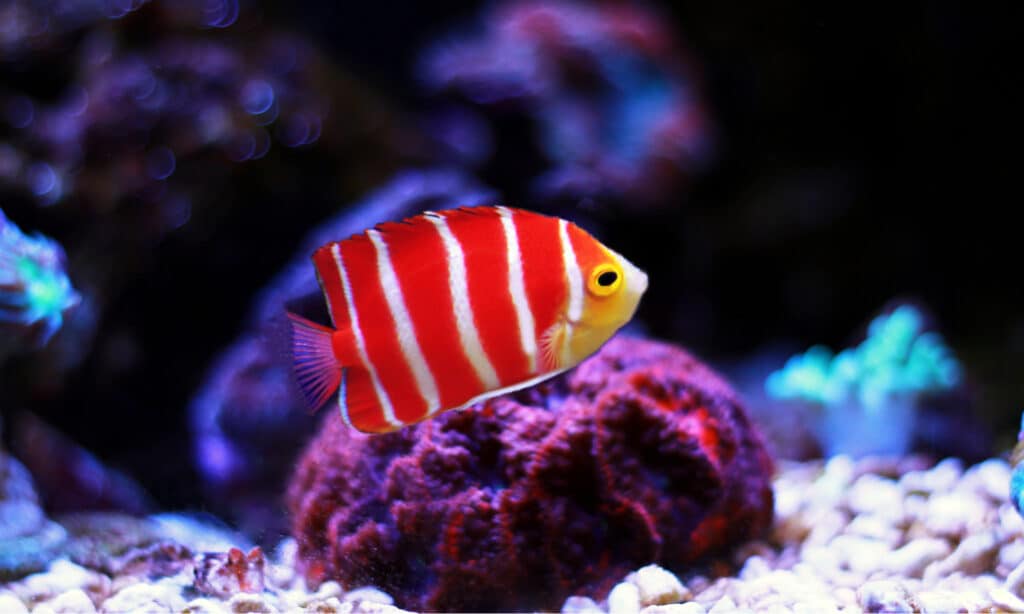
The Peppermint Angelfish’s unique colors make it look like the candy for which it is named.
©Vojce/Shutterstock.com
There are a multitude of fish to choose from when setting up your fish tank. They can range in price from affordable, like barbs, tetras, mollies, and betas, to incredibly expensive, as evidenced by the ten mentioned above. If you prefer to opt for the pricier fish to add to your collection, or even if you would rather avoid accidentally purchasing one, there are a few additional not-quite-budget-friendly species that you should be on the lookout for.
They may not have made the top of the list, but they are still quite costly and deserve an honorable mention. Here are just a few:
- Freshwater Polkadot Stingray (Potamotrygon leopoldi) – this species of venomous freshwater fish is also known as the white-blotched river stingray and the Xingu River ray, and is endemic to the Xingu River in Brazil. If you wish to keep them in a tank, you need to have a large one, it is suggested a minimum of 180 gallons, as they can grow around 30 inches in size. These rays can command a hefty price and at the higher end, are known to go for up to $100,000, but they are also available at a much lower price of $1,500.
- Flowerhorn Cichlid (Amphilophus hybrid) – these ornamental aquarium fish are hybrids that belong to the family Cichlidae and are not found in the wild, although they have been inadvertently released into certain locations in the wild and have been able to reproduce. It is said that it is the most expensive aquarium fish sold on record, at a whopping $600,000, to a buyer in Malaysia, but the average price for these Cichlids is in the more affordable range of $150.
- Peppermint Angelfish (Centropyge boylei) – named for their red-and-white striped bodies that appear like peppermint candies, these little fish are one of the rarest angelfish in the world. Believed to be endemic to the Cook Islands, and found in the central area of the South Pacific Ocean, this tiny fish has been known to command high prices and it is believed that one single fish was even offered at a price of $30,000. What drives their cost up is the extreme difficulty it takes to catch one – they live in waters that are not only remote but very deep and require specially trained divers to retrieve.
The photo featured at the top of this post is © chonlasub woravichan/Shutterstock.com
Thank you for reading! Have some feedback for us? Contact the AZ Animals editorial team.






